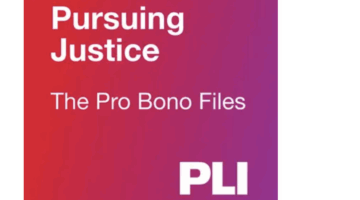 “Put one up for the Phifer, it’s time to decipher / The ills of the world make the situation lighter.” – Phife Dawg
“Put one up for the Phifer, it’s time to decipher / The ills of the world make the situation lighter.” – Phife Dawg
Last week, U.S. News & World Report released its annual law school rankings, and Yale Law School topped the list for the twenty-second year in a row. While Yale Law School and the other top 14 law schools are the envy of many in the legal world, their diversity statistics do have room for improvement.
Some legal scholars and analysts contend U.S. News should expressly incorporate student and faculty diversity into its overall rankings (see here and here). While U.S. News does maintain a law school “diversity index,” this data set is not a factor in the overall rankings. Do you believe that incorporating diversity statistics into the U.S. News Rankings would fairly promote diversity and inclusion efforts and produce an accurate picture of the law school landscape?

Pursuing The Pro Bono Story: A Conversation With Alicia Aiken
This Pro Bono Week, get inspired to give back with PLI’s Pursuing Justice: The Pro Bono Files, a one-of-a-kind podcast hosted by Alicia Aiken.
Since the late 1980s, the percentage of minority law school enrollment has significantly increased, and minority graduates have more than doubled (going from 10 percent to 23 percent). But minority enrollment and graduation at the top law schools have struggled to keep pace.
The specific change in demographics among top-tier schools is likely to be the biggest indicator of potential diversity in prestigious legal areas (e.g., Biglaw, federal clerkships, prestigious fellowships). Thus far, there hasn’t been much change in the diversity statistics of top-ranked law schools. But with a coordinated work process and conscious effort, Yale Law School seeks to ensure progress on these issues.
In spring 2015, YLS Dean Robert C. Post convened the Committee on Diversity and Inclusion and asked it to research issues and recommend initiatives to enhance diversity and inclusion within the Law School community.
This week, the Committee – composed of faculty and students, and co-chaired by Professors James Forman Jr., Heather Gerken, and Tom R. Tyler – released its report. The committee made more than 60 recommendations focusing on student and faculty diversity, mentoring and classroom climate, enhanced support for student and alumni groups, and methods to ensure ongoing progress on these issues.

The Trump Gold Card: A New $1 Million Pathway To A U.S. Green Card
A new proposal would let wealthy foreign nationals secure an opportunity for a U.S. green card with a $1 million 'gift' to the government, sparking legal and ethical debate.
Yesterday, I had the opportunity to catch up with Professor Gerken, and she was gracious enough to share insights from the committee’s work as well as advice for ATL’s law school audience. Here is an excerpt from our conversation:
Renwei Chung (RC): Why did Yale Law School feel the need to form a committee to address diversity and inclusion?
Heather Gerken (HG): Committees are how things get done at universities. The students raised important issues that deserved our sustained attention. By the time the committee completed its work, we felt confident that we’d heard from the entire community and put forward recommendations that will make a real difference in the coming years.
RC: From your perspective, what were some of the committee’s most surprising findings?
HG: I was surprised by how little data is out there – not just at Yale, but at our peer schools. We all believed that Yale should lead on these issues no matter what our peers are doing. But it was remarkably hard even to get a handle on where Yale stood relative to its peers. The same was true when we tried to identify best practices. Lots of professional schools and colleges tout their programs, but it’s surprisingly hard to figure out what’s really working. That’s one of the reasons we are so excited that the Dean has hired a consultant to help us identify best practices as we move forward.
RC: What recommendations do you have for other law schools or law firms hoping to tackle the issues of diversity and inclusion?
HG: This is going to sound hokey, but nothing substitutes for respecting and listening to your students. There’s a stereotype in the media that students these days are unreasonable or hostile to free speech or naive. Nothing could have been further from the truth at YLS. Our students were the reason this process worked.
They were thoughtful, pragmatic, and helpful, and they came up with one great proposal after another. The students were generous toward the school and to one another and – contrary to that media stereotype – more than able to compromise when something wasn’t doable.
They also worked incredibly hard – and by “they,” I mean the students on and off the committee. Adan Martinez and Katherine Demby, the leaders of the Alliance for Diversity, deserve a special shout out for all the help they gave the committee. We have faith in the committee’s recommendations because we have faith in our students.
Diversity and inclusion is an essential part of the university and the profession, according to Gerken. Because these are systemic issues resulting from deep inequalities that exist in society, Gerken believes that YLS and its peer institutions need to continually ask themselves “how can we do more?” and “how can we be better?” She believes the committee’s report is a result of these questions.
Throughout our conversation, she consistently brought up the need for proper mentorship to promote an inclusive environment. In fact, many of the recommendations in the report focus specifically on mentorship. YLS Professor and author Amy Chua was highlighted (on page eight of the report) as an example of the faculty becoming more self-conscious and thoughtful about their professional mentoring – and as a result fostering a more inclusive atmosphere.
In addition, Gerken stressed the need to collect and compile the requisite data to properly address diversity and inclusion. At the end of our conversation, she reminded me that the committee’s report is an incremental step in YLS’s diversity and inclusion efforts.
Gerken believes this report is just the beginning of the conversation to ensure a deliberative process and a successful framework for these issues. She contends the focus going forward must be on the continual evaluation and successful implementation of these recommendations, several of which have already been implemented.
It is no secret: people play differently when they are keeping score. It is refreshing to see that organizations like Yale Law School are beginning to identify best practices and track key metrics so we can begin to truly assess what’s inhibiting diversity at the top-ranked law schools.
Law schools and law firms can learn quite a bit from those organizations that are already ensuring ongoing progress on these issues. Moreover, the law school community and legal profession as a whole can benefit immensely from comprehensive reports derived from hundreds of meetings, thousands of hours, and many months of hard work, thorough investigation, and passionate deliberation.
U.S. News may never incorporate student diversity into its overall rankings. Nevertheless, we should still aim to improve diversity and inclusion in our law schools and law firms because we as a profession can do more, we can be better.
On behalf of everyone here at Above the Law, I would like to thank Professor Heather Gerken for sharing the YLS committee’s research and analysis with our audience. If your law school or law firm is working on innovative practices in the diversity and inclusion space, please let us know.
Renwei Chung attends SMU Dedman School of Law. He has an undergraduate degree from Michigan State University and a MBA from the University of Chicago. He is passionate about writing, technology, psychology, and economics. You can contact Renwei by email at [email protected], follow him on Twitter (@renweichung), or connect with him on LinkedIn.